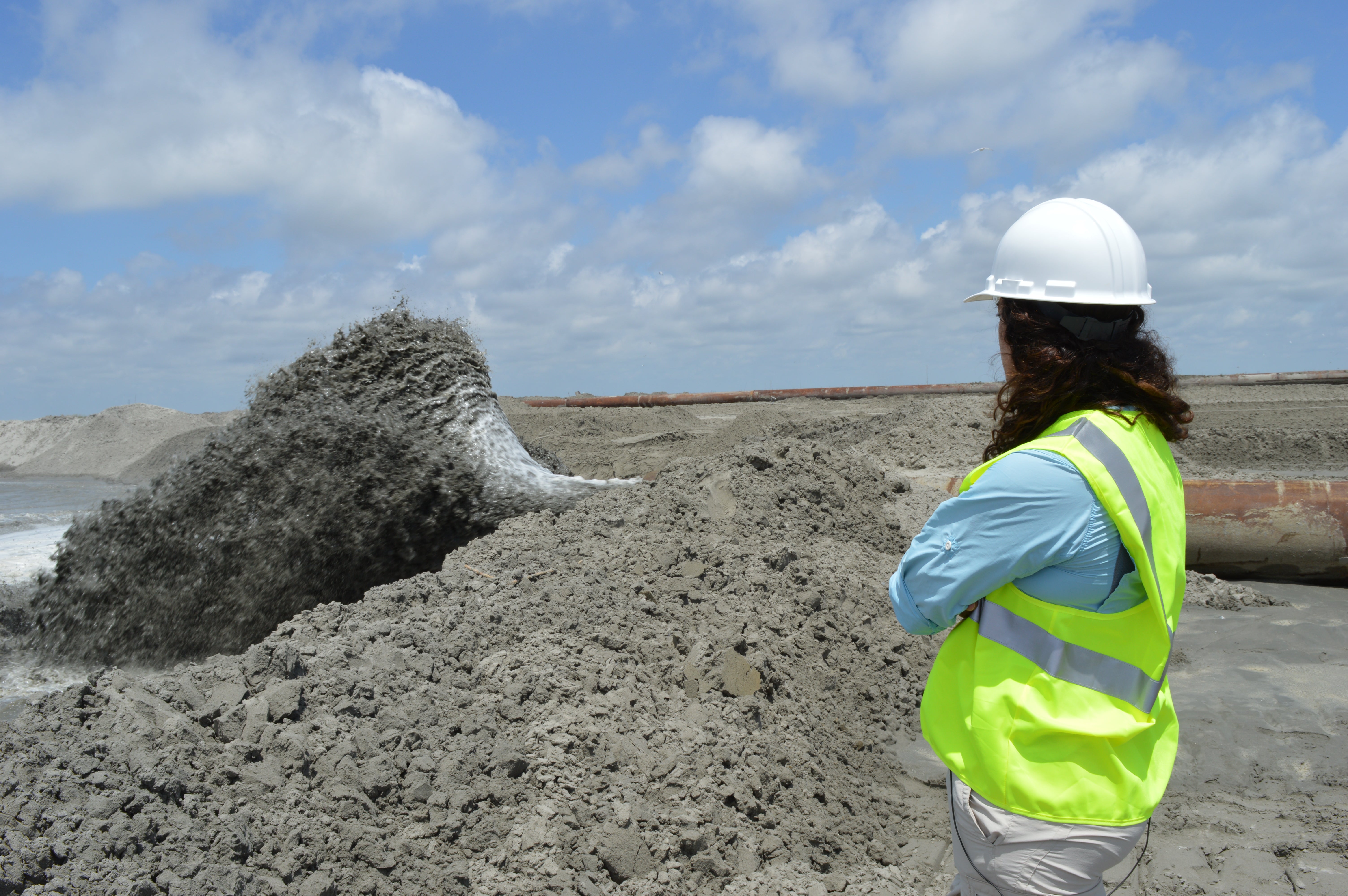Seven Years After the Spill: Restoring the Louisiana Coast
It’s been seven years since the Deepwater Horizon oil spill in the Gulf of Mexico. I remember visiting Grand Isle in the spring of 2011, one year after the spill, and being shocked that I could still see the sheen of oil on the surface of wetlands and tar balls washing onshore. Now, seven years later, the Gulf Coast and Mississippi River Delta are still in urgent need of restoration and recovery.
But Louisiana’s coast was in crisis long before the spill. The Mississippi River Delta has been vanishing at an average rate of one football field of wetlands every hour. This disappearing paradise is home to more than two million people who depend on barrier islands and wetlands for storm protection and their livelihoods. These same coastal marshes and estuaries provide critical habitat for hundreds of bird species and serve as winter home to 70 percent of the ducks, geese and other waterfowl that migrate along the Central and Mississippi River Flyways.
Now, the largest restoration effort in history is underway.
Oil spill funding
There are three main funding streams that send money back to the Gulf to help each state recover from the oil spill. The National Fish and Wildlife Foundation (NFWF) Gulf Environmental Benefit Fund comes from the criminal settlement between Transocean and BP and contains $2.54 billion to fund projects that benefit Gulf Coast natural resources impacted by the spill. The RESTORE Act directs $5.3 billion of Clean Water Act penalties back to the Gulf for ecosystem and economic recovery efforts. And an additional $8.8 billion is available through the Deepwater Horizon’s Natural Resource Damages (NRD) settlement to help restore wildlife and habitat damaged by the spill.

EDF’s Estelle Robichaux watches barrier island restoration in action.
All in all, Louisiana will receive approximately $8 billion in restoration funding over the next 16 years.
Though this seems like a lot, it’s not nearly enough to fully restore and sustain the Mississippi River Delta. That’s why it’s crucial to prioritize restoration projects selected through a science-based process that will work together to have the greatest benefits for coastal habitats, wildlife and communities.
Putting restoration dollars to work
Fortunately, Louisiana is well-positioned to take advantage of the restoration dollars coming in and to realistically address its vanishing coast thanks to the state’s Coastal Master Plan. Yesterday, Louisiana’s Coastal Protection and Restoration Authority (CPRA) Board approve the 2017 Coastal Master Plan, the blueprint for the state’s coastal restoration and protection over the next 50 years. The plan uses the best-available science to select coastal restoration and protection activities to reduce risks associated with sea level rise and land loss, building on the 2012 Coastal Master Plan. Within the next few weeks, the plan will be voted on by the Louisiana Legislature.
Among the project types prioritized in the master plan are sediment diversions, with approximately $5 billion budgeted for such projects. Sediment diversions seek to reconnect the Mississippi River sediment to the surrounding delta. One of the most important river reconnection projects highlighted in the master plan is the Mid-Barataria Sediment Diversion. This project is designed to reconnect the river with Barataria Bay to maintain existing wetlands, build new land and increase the area’s resilience to sea level rise and storms.

Conceptual design concept for a sediment diversion. Credit: CPRA
Marsh creation projects are also prioritized in the master plan, with just over $17 billion budgeted for these projects. The Golden Triangle Marsh Creation project, for instance, recently received funding from RESTORE Act grants to start the engineering and design phases. The restored marsh will help improve flood risk reduction for New Orleans and provide critical estuarine habitat for Lake Borgne and Mississippi Sound.
Several other marsh creation projects highlighted in the plan are funded through NRDA, including the completed Lake Hermitage Marsh Creation project, which created brackish marsh habitat in Barataria Bay to compensate for damage caused by the spill.

Degraded Louisiana central wetlands
Looking ahead
Seven years after the disaster, decision-makers must best leverage the funding available for restoration by prioritizing science-based projects that will do the most good for the delta and the entire Gulf ecosystem. The Louisiana Coastal Master Plan is a critical part of that process.
You can help by supporting the 2017 Coastal Master Plan as it heads to the state legislature for a vote this spring. Take action and tell your legislator to pass the plan!